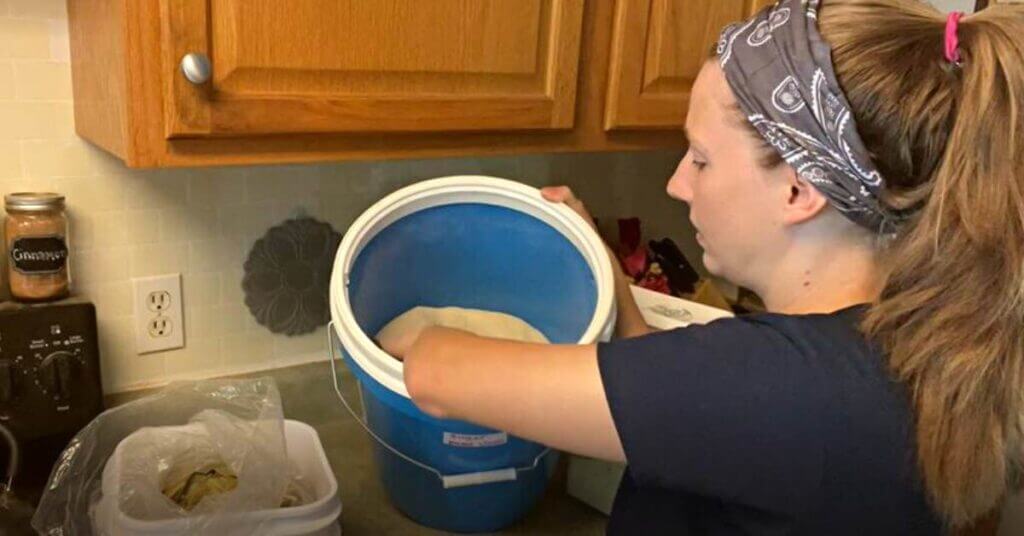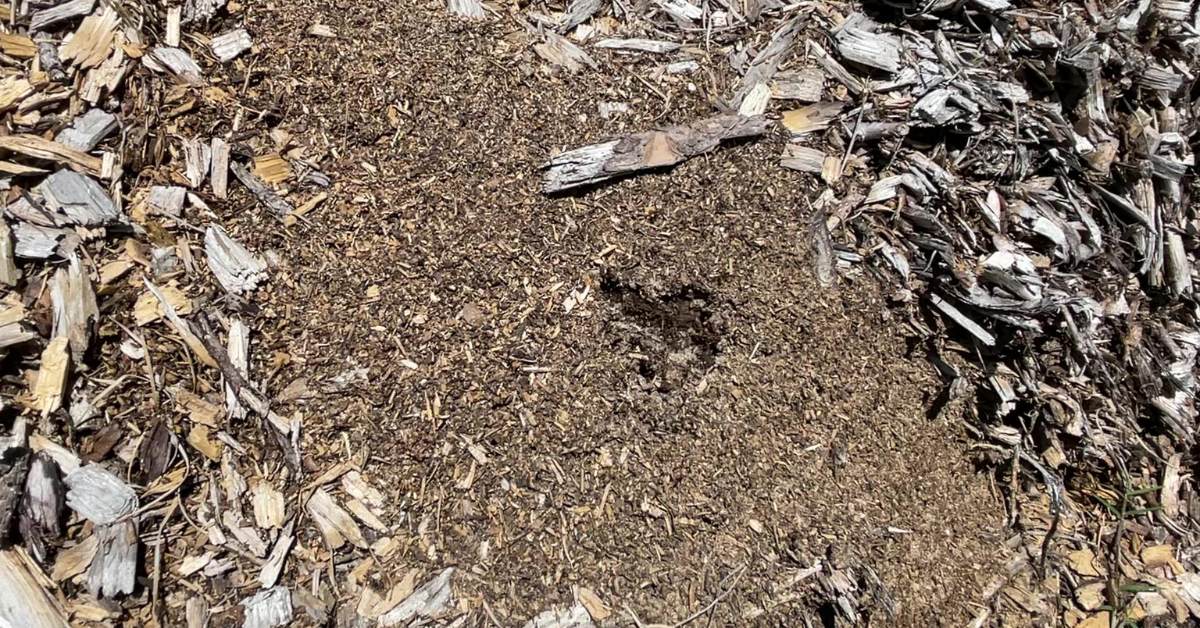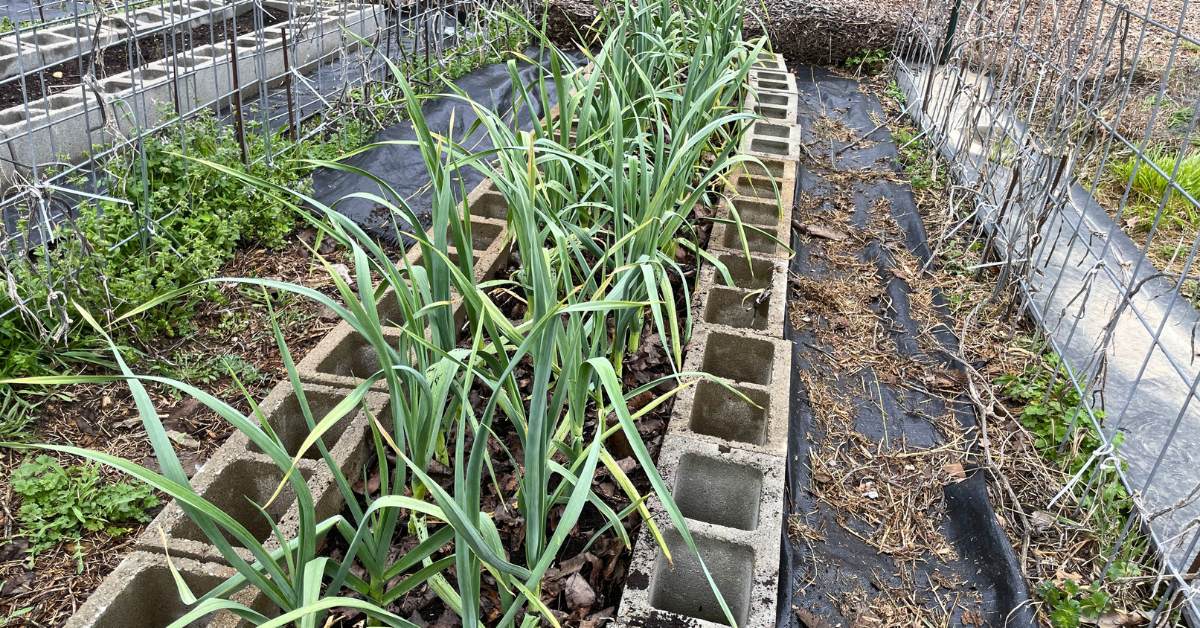For many years, I didn’t worry about storing sugar because we only kept 5 lbs on hand, and even that lasted 6 months or more.
However, now that I’m big into canning and baking to meet my family’s bread needs, we store sugar in bulk. Our goal is to keep a year’s supply on hand at all times, which means I now need to be smart about sugar storage.
Besides moisture, the number one enemy to sugar is pests. Since sugar is basically “free energy” for bugs, they prefer it to other foods.
(Have you ever seen how quickly a dropped lollipop gets covered in ants?)
So, let’s talk about how to keep pests out of your sugar—whether it’s your daily use jar or your backup stockpile.
Does Sugar Attract Bugs?
When it comes to bugs, sugar can be a tempting treat that attracts them to your pantry. Bugs such as weevils, ants, and cockroaches are known to be attracted to sugar.
However, it is not the sugar itself that attracts them, but rather the scent that comes from it.
Bugs have a heightened sense of smell. In fact, ants can detect the scent of sugar from miles away. This is why it’s so important to store sugar properly.
If you do find bugs in your sugar, it’s best to discard it and clean out your entire pantry to ensure they’re not hiding elsewhere.
Types of Pests Attracted to Sugar
When it comes to storing sugar, it’s essential to keep it away from pests that are attracted to its sweetness. Here are some common types of pests that can invade your sugar:
- Ants: Sugar is basically edible energy for ants. Thanks to the lightweight nature of sugar granules, they’re even more attractive to ants since they carry their findings back to their colonies.
- Saw-toothed Grain Beetles: Don’t let the word “grain” fool you. These beetles are flat-bodied and can easily fit into tight spaces. They are brown and about 2.5 to 3 millimeters —and they love sugar.
- Weevils: Weevils are small beetles with a long snout. They are reddish-brown and about 2 to 3 millimeters long. They can infest a wide range of dry foods, including flour, rice, and sugar.
- Indian Meal Moths: Commonly known as “pantry moths,” these little critters like to infest sugary dry foods, including flour, cereal, and sugar. (These are the worst with flour. Learn how to store flour long term here.)
- Flies: Flies are attracted to the sweet smell of sugar and can easily infest sugar, honey, and syrup. They can also be attracted to cakes, cookies, and other sweet treats.
FREE FOOD STORAGE PLAN!

Does gathering and storing a year’s worth of food for your family seem overwhelming and unachievable?
Make it easy with our step-by-step plan. Subscribe to our weekly newsletter & we’ll send it to you FREE!
How to Store Sugar to Prevent Bugs
If you’re storing sugar in bulk, you’ll want to protect your investment from 6-footed thieves.
Besides choosing the right container, which we’ll discuss more in-depth in the next section, here are some best practices to preserve sugar:
- Keep sugar in an airtight container: Bugs can easily get into open containers. Even a sealed container with the slightest gap is prone to a pesty invasion.
- Keep sugar away from moisture: Moisture can cause sugar to clump and attract bugs. Make sure to store sugar in a dry location, away from strong odors.
- Use dried bay leaves: Hang or place dried bay leaves in cabinets where sugar and other sweet treats are stored to keep bugs at bay. (See what I did there?)
- Practice FIFO method: As always, practice the FIFO (first-in, first-out) method of stockpiling. This method ensures that older sugar is used first.
- Keep your pantry clutter-free: Wipe down shelves and containers regularly to remove any crumbs or spills that could attract pests. It’s easier to spot the early signs of a bug problem in a clean and organized pantry.
Prices pulled from the Amazon Product Advertising API on:
Product prices and availability are accurate as of the date/time indicated and are subject to change. Any price and availability information displayed on [relevant Amazon Site(s), as applicable] at the time of purchase will apply to the purchase of this product.
By following these simple tips, you can store sugar for an extended period without worrying about bugs infesting it.
Best Containers to Store Sugar Long Term
When it comes to storing sugar long term, choosing the right container is crucial to prevent bugs from infesting your sweet stash. Here are some of the best containers to consider:
Airtight Containers
Airtight containers come in various sizes and materials, including glass, plastic, and metal. Glass and metal containers are preferred as they do not absorb odors and are less prone to cracking or breaking.
Prices pulled from the Amazon Product Advertising API on:
Product prices and availability are accurate as of the date/time indicated and are subject to change. Any price and availability information displayed on [relevant Amazon Site(s), as applicable] at the time of purchase will apply to the purchase of this product.
The next two container types are considered airtight.
Canning Jars (AKA Mason Jars)
Canning jars are another excellent option for storing sugar long term. They are made of glass, which means they don’t absorb odors or flavors. Since Mason jars come in various sizes, you can store sugar in various quantities.
Prices pulled from the Amazon Product Advertising API on:
Product prices and availability are accurate as of the date/time indicated and are subject to change. Any price and availability information displayed on [relevant Amazon Site(s), as applicable] at the time of purchase will apply to the purchase of this product.
Being clear, it’s easy to check for signs of bug activity. Last but not least, canning jars full of sugar sure look pretty on the shelf. 😉
Food-Grade Buckets with Gamma Lids
Food-grade buckets with gamma lids are a great option for storing large quantities of sugar—emphasis on the gamma lids. The cheap, flimsy lids that buckets typically come with will NOT protect against pests.
Prices pulled from the Amazon Product Advertising API on:
Product prices and availability are accurate as of the date/time indicated and are subject to change. Any price and availability information displayed on [relevant Amazon Site(s), as applicable] at the time of purchase will apply to the purchase of this product.
Besides, gamma lids are easy to open and close, making it convenient to access your sugar when you need it.
Plus, they are sturdy, giving you the option of stacking buckets on top of each other to maximize storage space!
Choosing a Location for Optimal Sugar Storage
Not only is how you store sugar important, but where you store sugar is essential. Here are a few factors to consider:
Store in a Dry Location with Humidity Control
Sugar is hygroscopic, which means it attracts and absorbs moisture from the air. This moisture can cause sugar to clump and harden, making it difficult to use.
To prevent this, store your sugar in a dry location with humidity control. A pantry or cupboard is a good option, as long as it is not near a humidifier or in a damp basement.
Store Off the Ground If Possible
Of course, bugs like to crawl, so storing your sugar off the ground can help prevent them from getting into it. Use a shelf or a table, or even a pallet if you’re storing large quantities of sugar.
Stackable 5-gallon buckets (thanks to gamma lids) are beneficial here. You can focus your pest-control efforts on the floor near that bottom bucket.
Store Somewhere You Can Check Regularly
Even if you’ve taken all the necessary precautions, bugs can still find their way into your sugar. That’s why it’s important to store your sugar in a location where you can check it regularly. This will allow you to catch any buggy behavior early.
Store Away From Doors and Windows
Since bugs enter your home through doors, windows, cracks and crevices, it’s important to store your sugar away from them. Keep your sugar in a location that is not directly exposed to sunlight or drafts.
Do I Need to Use an Oxygen Absorber?
The short answer is no, you do not need to use an oxygen absorber when storing sugar.
In fact, using an oxygen absorber with sugar can actually be detrimental to its storage. Oxygen absorbers work by removing oxygen from the surrounding environment, which can cause sugar to harden and clump together, making it difficult to use.
Additionally, using an oxygen absorber with sugar can create a false sense of security. While oxygen absorbers can help prevent the growth of bacteria and mold, they do not protect against insect infestations.
Insects can still enter the container through small openings or even lay their eggs in the sugar itself.
Will Sugar Last Longer in a Mylar Bag?
Technically, yes. Since mylar bags block light and moisture and are, mostly, airtight, they are a good option.
Prices pulled from the Amazon Product Advertising API on:
Product prices and availability are accurate as of the date/time indicated and are subject to change. Any price and availability information displayed on [relevant Amazon Site(s), as applicable] at the time of purchase will apply to the purchase of this product.
However, sugar is a natural preservative. (Think about how it’s used to preserve fruit in the form of jams and jellies.) It’s also not as light-sensitive as other preserved foods are such as canned foods and dehydrated items.
Personally, I think storing sugar in mylar bags is overkill. I want to save the “heavy duty” shelf-life extenders for items that really need it—and sugar is not one of them.
Overall, when storing sugar to prevent bugs, the #1 tool in your food-storage toolbox is an airtight container. Beyond that, it’s simply a matter of choosing the best location.
Store your sugar in a dry, dark place, preferably off the ground. By following these guidelines, you can enjoy bug-free sugar for years to come.















